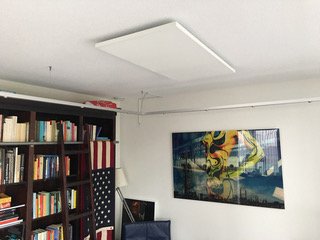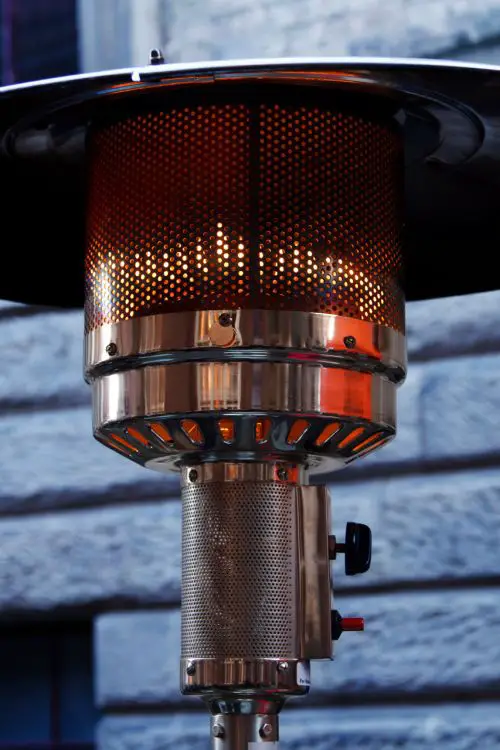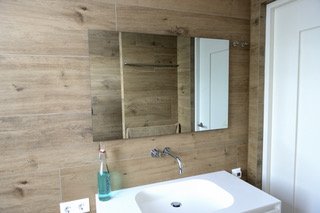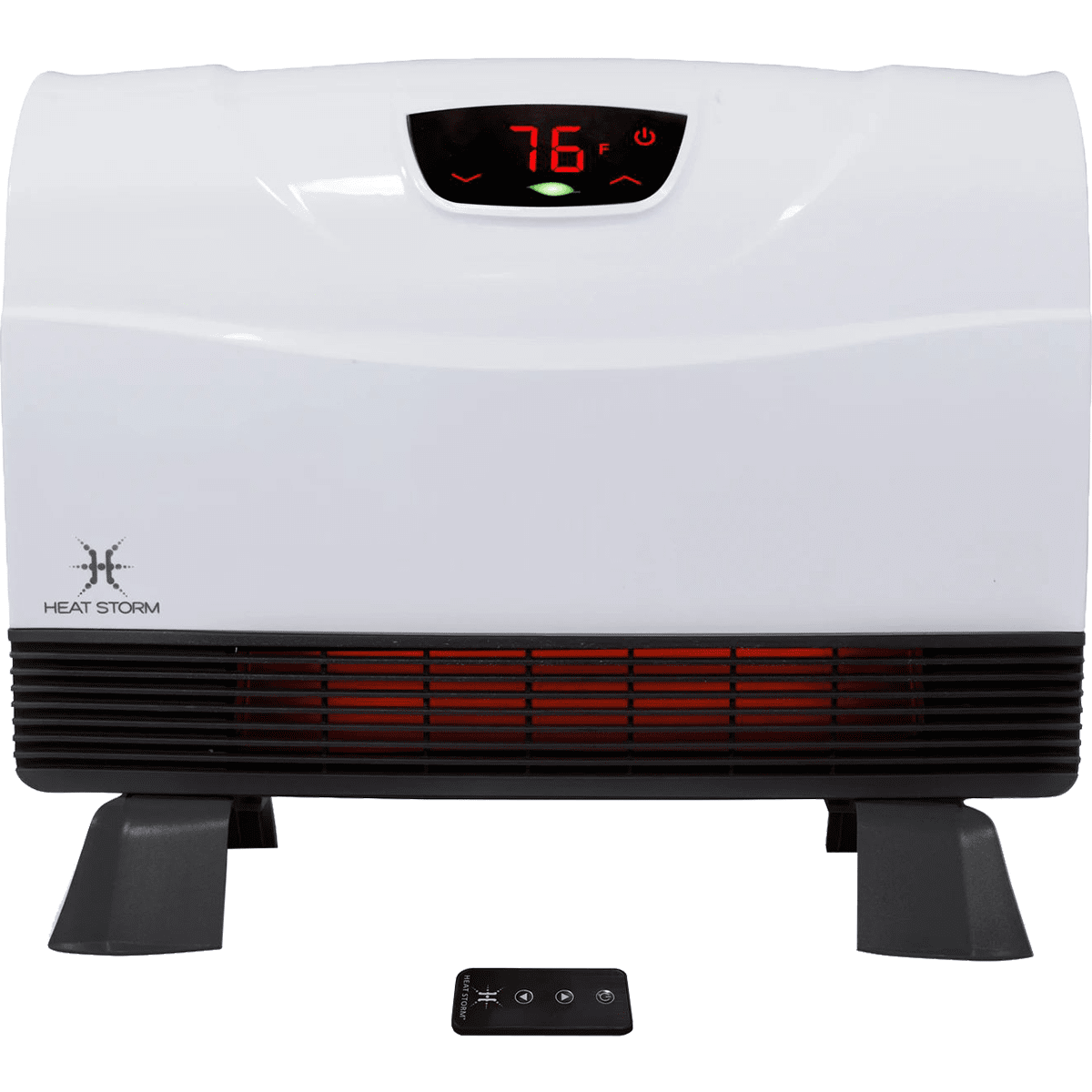Quartz, carbon, and IR panels are all infrared heaters. Quartz and carbon heaters have internal components that become very hot, up to 1800 F. IR panels do not get hotter than 200 degrees F. Quartz and carbon heaters can last up to 60.00 hours while IR panels can last for 100.000 hours.
In this article, I will explain the difference between quartz heaters, carbon infrared heaters, and IR panels. I will discuss their:
- safety
- healthiness
- life expectancy
- efficiency
- heating options
- noise
- light emittance
But first:
What is a quartz heater?
A quartz heater is an electric heater that produces infrared (IR) radiation to provide warmth. Quartz heaters are available as indoor space heaters, outdoor patio heaters, or a heater designed for industrial purposes.
It is called a quartz heater because of the use of quartz, a material similar to glass but much more heat resistant. A quartz heater works very similarly to an old-fashioned lightbulb. Except it becomes much hotter (therefore, quartz is used instead of glass) and emits infrared instead of visible light.
What is an infrared heater?
An infrared heater is a heating device that emits heat in the form of infrared radiation. These heaters can be electric heaters using quartz or carbon, or they are gas-fired, running on propane or natural gas.
An infrared heater is very similar to a quartz heater, with the exception that it doesn’t use quartz. These heaters can use other materials such as carbon wires, or they simply use quartz but don’t mention it.
Infrared heaters are also available as IR panels. These panels have a more modern look and superior durability.

Image credit: Arno Reijnen from www.infrarood-warmtepanelen.nl
Want to know more about infrared heating panels? My article: Infrared heating panels at home: What, how, and why goes into depth about the pros and cons of infrared heating panels, how they compare to conventional heating systems, and includes a table of their size vs heat output.
Overview table of all the differences
The following table shows the differences between quartz, and carbon infrared heaters as well as infrared panels.IR heaters Quartz carbon panel Energy type electricity electricity electricity IR efficiency (approx.) 90% 90% 90% Start-up time/response time (approx.) < 1 minute < 1 minute < 1 minute Life expectancy (approx.) 20.000 – 60.000 hours 10.000 hours 100.000 hours Light emitting yes yes no Application indoors and outdoors indoors and outdoors indoors (including bathroom) Heat control options multiple modes depending on the device multiple modes depending on the device no modes, use a thermostat Makes sound no no no
Infrared heating safety
Quartz and other infrared heaters can get very hot, up to 1000 degrees Celcius (1800 degrees Fahrenheit) or higher for industrial heaters. Residential heaters are normally encased in cabinets that will not get too hot and can be touched.
Some infrared heaters automatically shut off when they overheat. However, the required temperature for proper heating is still extremely high.
An infrared heating panel, however, won’t get much hotter than 100 degrees Celcius (210 degrees Fahrenheit), and smaller household models stay below 50 degrees Celcius (100 degrees Fahrenheit), making them safe to touch for a second. I will discuss these panels below.
The healthiness of IR heating
Health benefits of infrared heating
Electric infrared heating does not heat the air and therefore does not cause air circulation. This is a health benefit as circulating air causes dust and other potentially harmful substances to become airborne, making them easier to inhale. Additionally, electrical infrared heaters do not emit any harmful gases themselves, in contrast to conventional heaters that burn fuel.
On top of that, there are some small studies done on the potential beneficial effects of infrared heating. These studies, although too small to draw any real conclusions, seem to point to benefits such as reduced blood pressure and relaxing muscles. There are no downsides to far-infrared radiation.
You can read all about the health benefits of infrared heating in my article: The benefits of infrared heating: health and safety.
Short-wave infrared radiation concerns
Infrared radiation comes in different so-called wavelengths. This works similarly to the different colors of visible light, which is also caused by different wavelengths.
These wavelengths can be distributed in three categories:
- short-wave radiation (near-infrared)
- medium-wave radiation (mid-infrared)
- long-wave radiation (far-infrared)
Short-wave infrared radiation is the most intense of the three options. However, this wavelength poses some risks as long-term and/or close exposure to this type of infrared can lead to skin burns and damage to the eyes (similar to looking into a bright light). That is why glass-blowers and welders wear protective equipment.
Quartz and carbon infrared heaters produce a bit of soft red-glowing light. This is an indication that they produce some short-wave infrared radiation. Although they are safe to use, I recommend not staring into the light for too long. Additionally, make sure you read the safety instructions carefully. Some instructions mention a required distance from other (flammable) objects)
Infrared heating panels are 100% safe as they only emit far infrared.
What is the life expectancy of infrared heaters?
Infrared heaters last for a very long time. Quartz heaters will be able to run for about 20.000 to 60.000 hours and carbon heaters are known to last for at least 10.000 hours. So, if you run your quartz heater for 4 hours a day, it will last about 3.5 years.
Infrared heating panels however far surpass this durability and can last for 100.000 hours. That means you can run it 24/7 for about 11 years!
How efficient are IR heaters?
There is no real efficiency difference between quartz and other types of infrared heaters. That is because energy loss is normally in the form of heat. Therefore, heaters are almost always 100% efficient. However, the efficiency of anything is based on what percentage of the energy input is converted to the desired form of energy. Light-emitting IR heaters such as quartz heaters have some energy loss in the form of light. However, infrared heaters typically have an efficiency of over 90%,
For infrared heating, the efficiency of the heater tells us how much of the energy input is converted to the desired infrared radiation. The rest is lost as other forms of heat, or light. If you only care about infrared radiation and consider warming the air around the heater as a loss, efficiency is a relevant factor.
Here’s an example. Let’s say you install your portable quartz heater next to the television and aim its wonderful warm rays toward the couch. If your heater only has an efficiency of 80%, 20% of the energy input is converted into heating the air. This heat will rise to the ceiling, and will not reach the couch.
Of course, this is only relevant if you don’t want the air temperature in the house to rise. If you are warming the room with conventional heating at the same time, you are simply aiding it, and no energy will be wasted.
If you want to know more about the efficiency of infrared heating, please read my article: Everything I learned about infrared heating efficiency.
Infrared heating mode options

Some infrared heaters come with the option of different heating modes. Heating modes simply change the use of energy, and therefore the production of heat. For example, a 1500W infrared heater has the option to run on 900W, 1200W, or 1500W, depending on the desired heat output.
Infrared heating panels do not have these options. However, they can be connected to a thermostat. Hereby, they automatically shut off when the desired room temperature is reached. Additionally, you can just unplug them if no heating is required. Or you can install an on/off switch just like a light switch.
Do infrared heaters make noise?
Quartz or other infrared heaters normally do not make any sound. However, some infrared heaters come with a fan. This fan will make a little sound when operating. If your heater makes a lot of noise, something is not quite right. You should contact the seller or manufacturer for help or a warranty. You can read all about infrared heaters’ noise in my article: Do infrared heaters make noise?
Which infrared heater emits light?
Quartz and carbon infrared heaters give off a little red-glowing light. Quartz emits a little more light than carbon. You might be familiar with this type of red glow as it is the same glow as outdoor patio heaters.
Infrared panels do not emit any light.

Application
Indoors or outdoors?
Quartz and carbon infrared heaters are available for both indoor and outdoor use. Outdoor heaters are often wall-mounted as they require to keep a safe distance.
Infrared heating panels are only suitable for indoor use. They do not function well when there is a breeze, as their heat output is not intense enough.
Portable or fixed spot
Some infrared heaters are portable and have and can be installed anywhere you have a wall outlet available. Other heaters are designed to be mounted in a fixed spot.
Infrared heating panels come with an easy-to-install frame that allows for wall and ceiling mounting. I have found that the panels can easily be detached from the mounting frame. This gives you the option to quickly move the panel to a different spot if desired.
The advantages of IR panels
Infrared panels have several advantages over other types of IR heating. IR panels are available as sleek white panels, mirrors, or pieces of art. They come with a simple frame to mount to the wall or ceiling. Therefore, they can contribute to a modern look for your room or be installed to blend into the wall or ceiling.

Additionally, IR panels can be used in bathrooms while other infrared heaters cannot. They are just perfect as a bathroom mirror, keeping you warm with their sun-like rays while looking in the mirror.

If you want to know more about the benefits of infrared heaters and some potential issues, I recommend reading my article: Infrared heating pros and cons (personal experience).



